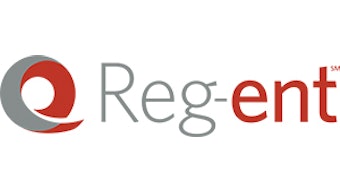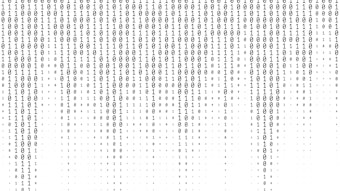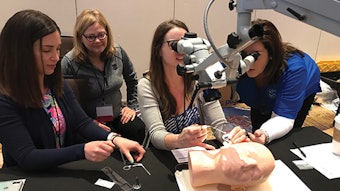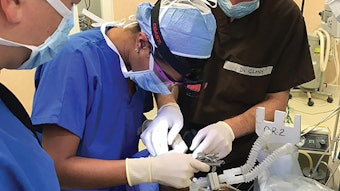MIPS Year 4: What You Need to Know
The Centers for Medicare & Medicaid Services (CMS) made several changes to the Merit-based Incentive Payment System (MIPS) for 2020, the program’s fourth year. CMS is required by the Medicare Access and CHIP Reauthorization Act of 2015 (MACRA) to implement a quality payment incentive program, referred to as the Quality Payment Program (QPP).
The Centers for Medicare & Medicaid Services (CMS) made several changes to the Merit-based Incentive Payment System (MIPS) for 2020, the program’s fourth year. CMS is required by the Medicare Access and CHIP Reauthorization Act of 2015 (MACRA) to implement a quality payment incentive program, referred to as the Quality Payment Program (QPP). This program rewards value and outcomes in one of two ways: MIPS and Advanced Alternative Payment Models (APMs).
Most AAO-HNS members participate in the QPP via MIPS. The AAO-HNS has developed this summary to provide members with high-level information on MIPS and changes in year four.

Overview
MIPS was designed to tie payments to quality and cost-efficient care, drive improvement in care processes and health outcomes, increase the use of healthcare information, and reduce the cost of care. Performance is measured through the data clinicians report in four areas:
Quality
Assesses the quality of care delivered based on measures of performance. Clinicians pick the measures created by CMS and stakeholder groups, like the AAO-HNS, that best fit their practices.
Improvement Activities
Assesses participation in clinical activities that support patient engagement, care coordination, and patient safety. The inventory allows clinicians to choose categories such as enhancing care coordination, patient and clinician shared decision making, and expansion of practice access.
Promoting Interoperability (PI) (formerly Advancing Care Information)
Focuses on the electronic exchange of health information using certified electronic health record technology (CEHRT) to improve patient access to their health information, exchange of information between providers and pharmacies, and systematic collection, analysis, and interpretation of healthcare data. This may include sharing test results, visit summaries, and therapeutic plans with the patient and other facilities to coordinate.
Cost (formerly Value-based Payment Modifier program)
Assesses the cost of care provided based on a clinician’s Medicare claims. Cost measures are also used to gauge the total cost of a patient during the year or a hospital stay.
Eligibility
Clinicians can now use the updated CMS Quality Payment Program Status Lookup Tool to check initial 2020 eligibility for the MIPS program. By entering a National Provider Identifier in the lookup tool, providers can determine eligibility for the 2020 performance period. Eligibility does change during the second half of the year, so it is recommended that clinicians check their status throughout the year. https://qpp.cms.gov/participation-lookup/
When
The MIPS Performance Year starts on January 1 and ends on December 31 each year. Participants must report data collected during the calendar year by March 31 of the following year to be eligible for a payment increase and avoid a payment reduction. Following the performance period, eligible clinicians who submit 2020 data for MIPS by March 31, 2021, will receive a positive, negative, or neutral payment adjustment in the 2022 payment year, which will be based on the MIPS final score.
MIPS Changes in Year 4
Performance Threshold
The Merit-based Incentive Payment System is raising the performance threshold points from 30 in 2019, to 45 in 2020. This significant jump will make avoiding a negative payment adjustment more difficult.
- As required by MACRA, the 2020 performance may result in a Medicare payment adjustment of up to +/- 9 percent in 2022.
- The exceptional performance threshold will be raised to 85 points.
- CMS maintained the performance category weights from 2019 for 2020:
- Quality: 45 percent
- Cost: 15 percent
- Improvement Activities: 15 percent
- Promoting Operability: 25 percent
Quality Category
Important changes have been made in the Quality category.
- For 2020, CMS increased the data completeness threshold for this category by 10 percentage points. Clinicians will now need to report each measure for at least 70 percent (up from 60 percent in 2019 of applicable patients).
- CMS removed 42 quality measures and added six new specialty-measure sets, including those for endocrinology and pulmonology.
Cost
In the Cost category, 10 new episode-based measures have been added so that more providers will qualify for this category. Also, CMS is revising the Medicare Spending Per Beneficiary Clinician and Total Per Capita Cost measures.
- CMS kept the weighting of the Cost category at 15 percent. However, clinicians can expect an increase in the Cost category weight in MIPS year five.
- CMS will maintain the existing eight episode-based measures and add 10 new episode-based measures for a total of 18 episode-based Cost measures.
Improvement Activities Category
- Starting in 2020, groups can only attest to Improvement Activities if at least 50 percent of the clinicians in the group or virtual group complete the same activity during any continuous 90-day period. Previously, at least one clinician in the group needed to complete the activity for the group to receive credit.
- The activities may be completed anytime within the calendar year.
- CMS added two new Improvement Activities measures, modified seven existing measures, and removed 15 measures.
Promoting Interoperability Category
- CMS reduced the threshold for a group to meet the definition of hospital-based and qualify for reweighting of the PI component. In 2019, in order to reweight the PI component, 100 percent of clinicians in a group had to meet the CMS definition of a hospital-based clinician. In 2020, more than 75 percent of clinicians in a group must meet the definition of hospital-based, in order for the group to have the category reweighted for the 2020 performance year / 2022 payment year.

The Reg-ent Registry and MIPS 2020 Reporting
In addition to serving multiple functions as the clinical data registry for otolaryngology-head and neck surgery, Reg-ent can also be utilized by members to report MIPS. Since Reg-ent is a CMS-designated Qualified Clinical Data Registry (QCDR), the platform can accommodate required reporting for three of the four MIPS 2020 performance categories: Quality, Promoting Interoperability, and Improvement Activities. Submission to CMS is completed through the Reg-ent dashboard. The Reg-ent dashboard provides a visual representation of performance for all three required reporting categories and generates score estimates.
Reg-ent also offers feedback opportunities to clinicians so that they can compare their performance to other providers in the registry at a national level.
The measures in Reg-ent include 17 QCDR specialty-specific measures developed by the AAO-HNSF available only in Reg-ent and 40 publicly available Quality Payment Program measures.
To learn more about Reg-ent, visit www.reg-ent.org and contact reg-ent@entnet.org. Visit https://www.entnet.org/2020-measures to view the full list of quality measures available for MIPS 2020 reporting through Reg-ent.
For any quality- or measure-specific questions, please contact quality@entnet.org.
Timeline for MIPS Performance Year 2020
January 1, 2020
Performance period began
December 31, 2020
Performance period ends
January 4, 2021
Submission window opens; first day to submit performance data*
March 31, 2021
Submission window closes; deadline for submitting performance data*
July 1, 2021
Performance feedback available
January 1, 2022
Payment adjustment begins
*Please note that the dates provided are only for the CMS QPP interface. Clinicians reporting via the Reg-ent registry, or through another MIPS reporting tool, should be aware that each vendor maintains its own timeline for submissions. Clinicians should contact their reporting vendor for details; Reg-ent participations should email reg-ent@ent.net.org.
















